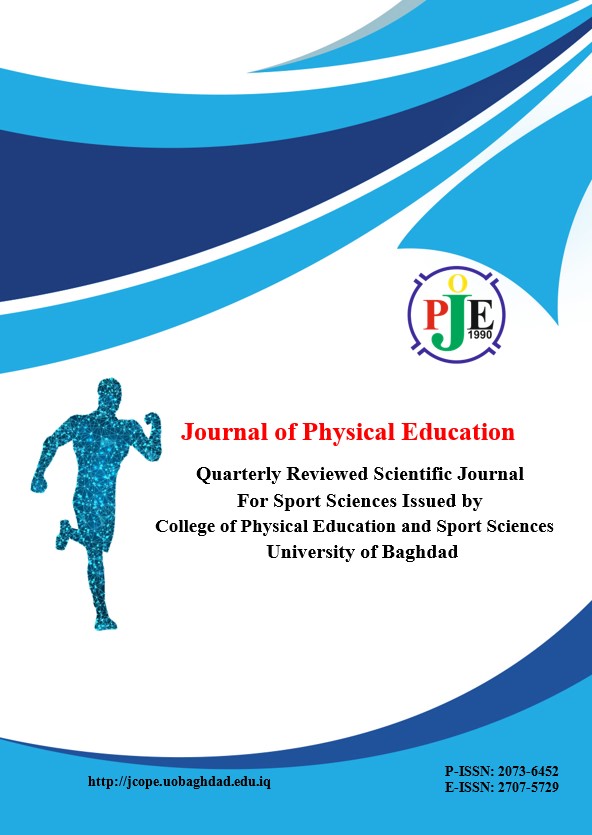The impact of the program of education in the development of kinetic motor activity visually impaired children ages (7-8) years
DOI:
https://doi.org/10.37359/JOPE.V26(4)2014.568Abstract
The problem with research in the physical activity practice in the schools of the blind and an important means to achieve growth, balanced and integrated to the child if the best use and due to the fact that the activity practiced without arousal and surrounded by a membrane traditional in its content as it had to be expanded Alasttharat motor to the overall development of the child came of Education kinetic method new educational programs in physical education to help a blind child to express itself and its potential mobility in order to achieve overall growth of the child and due to the lack of studies in education mobility to the category of low vision, as most of those studies were conducted on normal children came the current study, an attempt to detect the impact of the program of education mobility in development of motor activity for children aged visually impaired (7-8) years. The objective of this research to: detection of the impact of the program of education in the development of kinetic motor activity visually impaired children ages (7-8) years. The imposition of Search: The presence of significant differences between pre and post tests and post-test interest in the development of motor activity for the visually impaired children ages (7-8) years. Areas of research: the human sphere: children Rona Institute for the Blind in the center of Erbil age (7-8) years. Temporal area: 5/2/2012 until 10/3/2012. Spatial domain: sports arena for the Institute for the Blind to Rona in the center of Erbil. Been using experimental method for the suitability of the nature of the research, and included the research community on (13) students and a student of the Institute for Rowe Naki for the blind in the blind at the center of Erbil for the academic year (2011-2012) who are between the ages of (7-8) years and they are the students the second row Elementary, was selected as the visually impaired and those of their number (13) student and student, as was slavery (4) students to conduct exploratory experiment of the educational program and a consistency to them and thus total sample (9) male and female pupils. Was also used experimental design called the "random selection of test pre and post, was to rely on tests of motor activity for blind children, which include the (dramatic voice (run) s, roll a ball hockey cm, drop the ball degree, balancing hard tha, passing barriers Tha), was used (the arithmetic mean, standard deviation, choose a (t) linked to two samples equal number, the simple correlation coefficient) as a means of statistical and found to conclude the following: Education program with a kinetic effect of a positive and effective in the development of motor activity for the visually impaired children ages (7-8) years, provided that the program includes a variety of dynamic activities, taking into account individual differences among children as well as rely on their senses of touch and hearing for the development of kinetic aspects. The researchers recommended the following: 1- Use of motor education program on children with low vision ages (7-8) years because of its positive influence in the development of motor activity. 2- Conducting studies and other research aimed at different age groups and the variables of different variables for the current search.






 The Journal of Physical Education (JOPE) applies a Creative Commons Attribution 4.0 International license (CC BY 4.0), which lets others distribute, remix, tweak, and build upon your work, even commercially, as long as they credit you for the original creation. For more information, click the link :
The Journal of Physical Education (JOPE) applies a Creative Commons Attribution 4.0 International license (CC BY 4.0), which lets others distribute, remix, tweak, and build upon your work, even commercially, as long as they credit you for the original creation. For more information, click the link : 